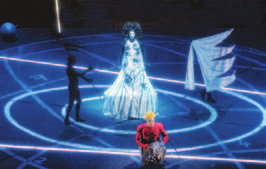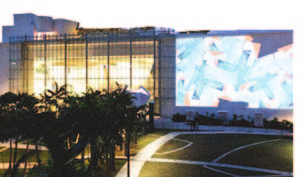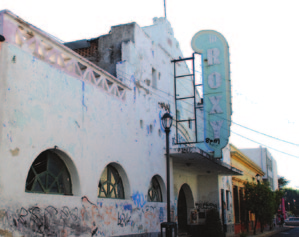How Music Works (51 page)
Authors: David Byrne
Tags: #Science, #History, #Non-Fiction, #Music, #Art

this institution is of course entirely their business. A 2010 Los Angeles Opera production of Wagner’s
Ring Cycle
cost $31 million to produce.24 Broadway shows don’t usually cost that much, unless you’re talking about the recent
Spider-Man
debacle. U2’s last concert-tour budget might be in that range, but those were stadium shows attracting huge numbers of people. And in those
latter two instances, the people who wrote the music are still alive, and presumably they get paid a piece out of every ticket sold, which is part of what keeps those production costs up. Wagner has been dead for a long time, so one assumes it’s not his agent who is charging the moon and driving up the cost of these
Ring
productions. (Granted, it is a four-part epic.) The Los Angeles Opera ended up with a $6 million deficit due to “slack demand for expensive tickets.”
Los Angeles is not known for its arts funding, public or private. The phi-
lanthropist Eli Broad and a few others might be trying to change that, but LA thinks of itself as a place that makes its own culture and entertainment—it
tends to value things according to how popular they are and how much money
they bring in. These values are completely the opposite of those espoused by the supporters of high-art music. Status in LA comes with having a huge hit, not by being seen at the opera.
284 | HOW MUSIC WORKS

What makes this situation notable is not the amount of money—
movies, of course, often cost a lot more than $31 million to produce—but
the fact that the audience for this production was, inevitably, fairly small, coupled with the fact that the state ended up footing part of the bill. A
$31 million dollar movie—a moderate budget by today’s standards—has a
chance of making back its investment and more, and there is the possibility
that it will be seen by vast numbers of people. A new opera production
is by nature limited from the start. Most of the time they are confined to
one theater. Alex Ross, the music critic for the
New Yorker
, observes that some opera and symphony seats cost less than those at Broadway theaters,
and less than those for some pop-music spectacles as well. So any charge
of elitism doesn’t hold if one uses ticket prices as a gauge. But in general, cheaper tickets are artificial—they are offered at a loss to support the idea that this good and uplifting medicine should be available to all. Like the
early museums that were intended to be free for everyone. Private and state
funding, in this business model, is supposed to pick up the shortfall. Even
with this aid they often have a hard time covering the expense of running and maintaining these halls or mounting their productions, as the Los Angeles
Opera
Ring
production proved.H In fact, since many high-art productions often lose money for their venues, to extend their runs and thereby increase attendance would be to risk going deeper into debt.
Is this any way to run a business? Opera companies have been trying to com-
pensate for these unfortunate financial realities by looking for other income sources. The Met has set up satellite simulcasts in cinemas—live high-definition broadcasts of the productions for those who can’t make it to the theater. Peter Gelb at the Met has been fairly successful with this kind of thing; the screenings brought in $11 million last year.
That is hardly going to make a
H
dent in that $325 million annual
operating budget, but every lit-
tle bit helps. David Knott, one
of their board members, echoes
the Victorian sentiments when
he endorses the simulcasts: “If
we can’t bring people to the
opera let’s bring opera to the
DAV I D BY R N E | 285

people.”25 On an outside wall of the new Frank Gehry-designed symphony hall in Miami, a beautiful projection-screen faces a park with outdoor seating.I This area effectively doubles the hall’s size, and makes symphony music available to those who can’t afford a ticket.
But is it even right to think of classical music as a business? Or are we
to believe it has a higher civic purpose? Even with all that private and governmental support, a lot of symphonies are struggling to hold on to their
audiences and make ends meet. In October of 2010, the Detroit Symphony
Orchestra wanted to require their players to work for community outreach
programs: engagement, education, and chamber music services, among other
adaptations to the financial squeeze they found themselves in. This would
have brought an unprecedented number of symphony musicians into class-
rooms and art centers. The contract would also allow for greater accessibility through streaming options, CD releases, and digital downloads. The musicians, however, wanted things to remain pretty much as they were, and they
went on strike for twenty-six-weeks. Well, have you seen Detroit in the last couple of decades? The symphony lies on the edge of the center of downtown, beyond which lies a wasteland. From the symphony building one can
see empty lots and crumbling, abandoned houses, formerly elegant hotels
and boarded-up mansions. More than half the city population has left. Few of those who remain in the city center are symphony patrons. The tax base that
would normally fund a symphony hall along with private donors isn’t there
anymore. In April of 2011, the Detroit Symphony Orchestra musicians agreed
to the new terms and ratified the contract.
Other cities have followed the same pattern. The Philadelphia Orchestra
filed for bankruptcy in the spring of 2011. Joseph Swensen, a violinist and conductor, wrote in to the
New York Times
with his thoughts on this state of affairs.
[The big orchestras] have become symbols not only of Western civilization at its best, but of prosperity and the quality of life in the cities, which they serve. But these huge institutional orchestras are like imperialist armies that have over-extended themselves… [Their musicians are] overworked, fanatically dedicated, highly trained
I
and highly paid people… [They are confronted with]
the realities of absurdly limited rehearsal time, an
abysmally limited repertoire, incredibly high expec-
tations for consistent technical perfection and little
286 | HOW MUSIC WORKS
possibility for anything one could call personal or individual creativity and what do you get? Well, in addition to very low job satisfaction, you get performances which inspire the phrase: “Once you’ve heard one major American symphony orchestra’s Beethoven 5 these days, you’ve pretty much heard them all!26
In his recent books, Alex Ross has been delicately pointing out that a lot
of North American orchestras are indeed stuck in the mud as far as their
repertoire goes. His unspoken assumption is that some more adventurous
fare might draw a younger generation of listeners and keep some of these
places from going under as their subscription audience ages into oblivion.
I’m not sure it would work, not in those traditional venues anyway. The
venues are physically and acoustically made for a particular kind of music
and a very specific way of enjoying it. To this end, the New York City Opera that used to be based in the Koch Theater at Lincoln Center tried doing
some wonderful and adventurous programming that I really enjoyed—I saw
a John Zorn piece there! But the noble intentions of the director may just be swimming against the tide. The $3 million generated in ticket sales didn’t
come anywhere near covering the annual $31 million budget for the opera
series in that building. They have moved out now, and are looking for some-
where else to mount their productions. These kinds of venues also have a
well-established reputation for being staid and conservative, while the pro-
gramming of adventurous fare in funkier and smaller venues like Le Poisson
Rouge, Julliard’s Merkin Hall, and elsewhere have, in a limited way, been
more successful as far as getting a new generation in the door to hear some-
thing other than pop songs in a club setting. These programmers feel free to mix and match with complete disregard for any idea of high and low music.
I saw tUnE-yArDs do a show at Merkin that consisted of Merrill Garbus
accompanied by a ten-piece a cappella group called Roomful of Teeth. The
walls really are coming down—a little.
THE BILBAO EFFECT
New concert halls and museums went up like crazy all around the world
during the economic bubble. It was not the programming that was
drawing audiences in many cases, but the buildings themselves. That’s what
DAV I D BY R N E | 287
happened when the Guggenheim Museum opened in Bilbao, Spain: tourists
had a reason to visit a place that many had never heard of before. It was truly amazing to behold how a new museum and a Calatrava bridge could change
a whole town. The museum recently had a show of Frank Lloyd Wright’s
work (which had been previously exhibited in New York’s own Guggen-
heim), along with a permanent-collection hodgepodge—not exactly reasons
to make a special trip. But people do. The city was a port and industrial
backwater that had seen better days, and now the whole town has enjoyed a
revival thanks to high-end culture. Other cities tried to copy this model—if you build it, they will come.
Based on the Bilbao experience, one answer to the question “What good
are the arts?” seems to be, “They can revitalize a whole town.” LA’s Walt
Disney Concert Hall looks almost exactly like the Bilbao Guggenheim. New
York almost built one in lower Manhattan, a place that hardly suffers from
a shortage of tourists. Everybody wanted one. Famous architects drew up
plans for wild new edifices in Dubai, Abu Dhabi, Dallas, Ft. Worth, and St.
Petersburg. Alice Walton (an heiress to the Walmart fortune) just opened a
massive museum to show off her collection in Bentonville, Arkansas; and
Russian “businessman”-in-exile Roman Abramovich has funded his girl-
friend Dasha’s new contemporary art museum in Moscow. This is all fine. If
the oligarchs of the world want to build their own culture palaces, symphony halls, and opera houses and fund the work that goes in them, great—who
could possibly complain? It’s their money, and why shouldn’t they spend
it on what are largely harmless showcases for their newfound good taste? I
was surprised to learn that the amount of state support for a place like Lincoln Center—the whole complex of which has an annual operating budget of
close to half a billion dollars—is relatively small. Twenty million or so. The place is open to the public, and there are reasonably priced seats for all, but it is still essentially a massive clubhouse for a certain set.
Since the crash, most cities know that their hopes for new culture palaces
will have to be deferred, but the ideal of a museum, symphony hall, or simi-
lar showcase as a symbol of the soul of a city remains potent and popular. A bunch of LA museums were given a bailout by real estate king Eli Broad, but
not every city has a Broad who can come to the rescue.
288 | HOW MUSIC WORKS
